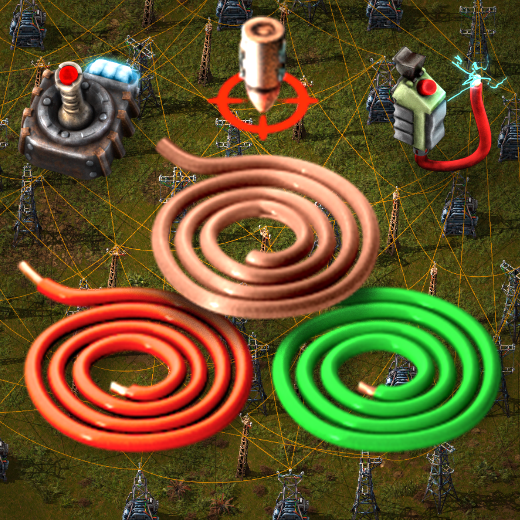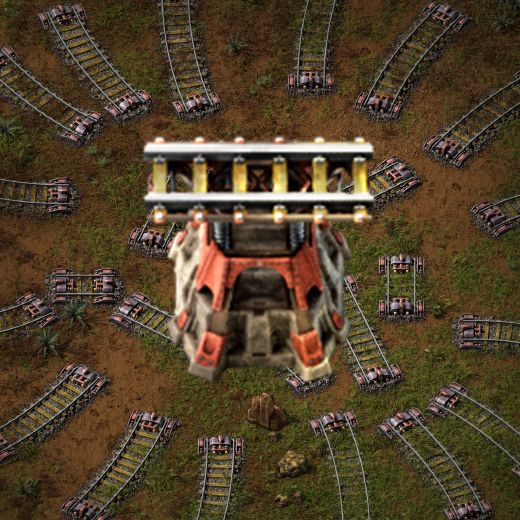- 11 Posts
- 13 Comments
I feel like lightning rods are going to be needed on this planet to protect your factory, but you will also be able to use them to generate electricity. The alien ruins are also interesting. I wonder if they will be required for research on this planet, as in you need to explore a little and find/fix an alien research building, or deconstruct them for artifacts. I also wonder what kinds of enemies you might find here? Ancient, self-replicating robots defending their long-gone masters from
foreign invadersyou?
To native English speakers, yes. To non-native speakers, this is yet another bizarre rule they just have to memorize.
Micay stepped down as lead developer and foundation director. I’m not sure what role he has with the project currently, but it seems like he plans on leaving the project entirely, long term. I haven’t heard of any controversy since then. They’ve been hard at work and actually added support for Android Auto last month.
 3·8 months ago
3·8 months agoSo many great changes I’m looking forward to using in the new update! Being able to flip oil refineries and chemical plants is a huge QoL upgrade for making compact, tileable designs. If I need to scale a refinery/chemical pipeline hotizontally, I can just copy it, flip it, and butt the inputs or outputs together.
Setting assembler recipes with the circuit network seems more powerful (and complicated, seen by the number of combinators) than most players will ever use, but that’s why I love this game. I think it’s really funny how the devs went from, “Parametized blueprints might be too complicated for players,” to, “just build a finite state machine out of logic gates to control your assembly machines.” I’m really looking forward to seeing what other people are capable of doing with this. I’ll have to dust off my notes from my digital logic classes before I have a go at it.
P.S. The devs totally missed the chance to make a Missy Elliott reference: “I put my thing down, flip it and reverse it.”

 14·10 months ago
14·10 months ago- SLC -> Single-Level Cell, i.e. 1 bit per cell
- MLC -> Multi-Level Cell, i.e. 2 bits per cell
- TLC -> Triple-Level Cell, i.e. 3 bits per cell
- QLC -> Quad-Level Cell, i.e. 4 bits per cell
The more bits per cell you store, the more dense and therefore cheaper your flash chips can be for a give capacity. The downside is that it is slower and less reliable since you have to be able to write and read exponentially more voltage states per cell, e.g. 2 states for SLC, 4 states for MLC, 8 states for TLC, etc.
 3·11 months ago
3·11 months agoUsing the circuit network has always been kind of tedious, so I’m glad to see that it is getting some love for the 2.0 update. Showing the input and output signals directly in the UI and being able to have a description for the combinators is going to make debugging much easier.
 13·1 year ago
13·1 year agoHoly shit, they actually did it! We’re getting train bridges! This looks incredible!
USB 2 is 480 Mb/s, not 480 MB/s. 480 Mb/s is 60 MB/s, so the 500 MB/s from PCIe 2.0 x1 is quite a bit faster and is about the limit of what a SATA 3 interface could do. Also, sequential throughput isn’t nearly as important as most people think. Random IO, which NVMe drives excel at, will make a far more noticeable impact on real world performance.
I was pretty skeptical when I first started reading through this, but I’m actually kind of looking forward to it now. People seem to be really turned off by the RNG, but with the recycler, you can essentially automate it away. I’m excited to play with recycling loop designs and separate production lines for high quality items/intermediates, and fast/efficient low quality production lines for science. I also think people are getting caught up in only thinking of the late game and waning to leap frog to tier 5 instead of thinking of the tiers as progression as you slowly build and iterate on your factory. I do agree that the naming for the tiers really doesn’t match Factorio though and something more industrial would fit better.
I’ve been using PhotoPrism for the past couple of days and have really liked it.
I was considering Immich, but the rapid development cycle turned me off of it for now. I don’t want to have to deal with keeping up with patch notes and potential breaking changes. Immich also seems more focused on photo backups from your phone, which isn’t quite what I wanted. PhotoPrism just let me upload all my existing photos on the web ui.
I’d say give both a try. Both provide a docker-compose file, so you should be able to bring them up fairly quick.

 1·1 year ago
1·1 year agoI think the snapshot exists but is not mounted as a btrfs subvolume.
Is it not listed when you try running
btrfs subvolume list .? You might need to change the.to a path that is on the array.from the research I did, the @docker folder at the volume root holds all the volumes, images, subvolumes, etc. and I did copy that over.
Copying over the files wouldn’t be enough. You would actually need to create the subvolumes, e.g.
btrfs subvolume create subvolume_name.Do you happen to know if I find the snapshot folder and download it, will there be anything recoverable? Or would it just be like, hashes and unintelligble stuff?
Unfortunately, I am not familiar enough with how Synology does things, but a btrfs snapshot will just appear as normal directory with the files/directories in it. If Synology isn’t using btrfs for the snapshoting, I’m not sure what you’ll find.

 3·1 year ago
3·1 year agoI’ll preface this by saying I am not familiar with Synology, but I am using Docker and BTRFS (which I am assuming is being used on your Synology NAS).
Do you have SSH access or the ability to get a shell on the NAS? If you do, you can try running
btrfs subvolume list .to see what subvolumes/snapshots are on your system. That will hopefully let you figure out where your data is. Once you narrow down where it is, you can try downloading it using an sftp client.As an aside, the reason Docker threw a fit whenever you tried to update an image is that Docker was probably automatically using the BTRFS driver, which creates a new subvolume/snapshot for every image/layer. When you remove images, it would just remove all the subvolumes/snapshots. When you copied your files over, you probably didn’t remake the subvolumes. That would have caused issues when trying to remove images, or create new images/containers.





Linus didn’t step down in response to this. I don’t remember the exact timelines, but he either stepped down before this, or was in already in the process of transitioning to the new CEO when this happened.